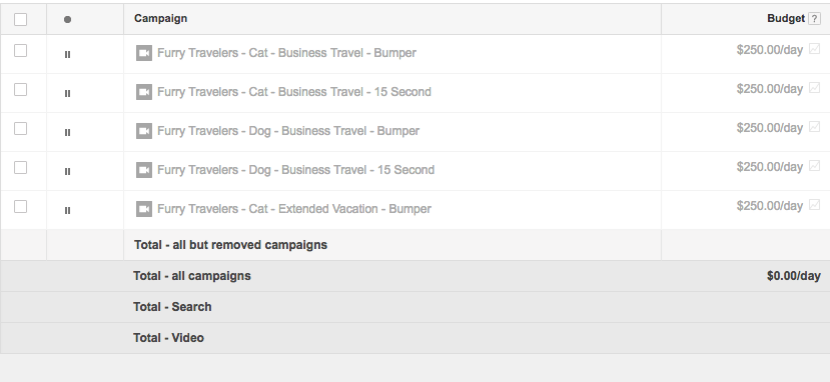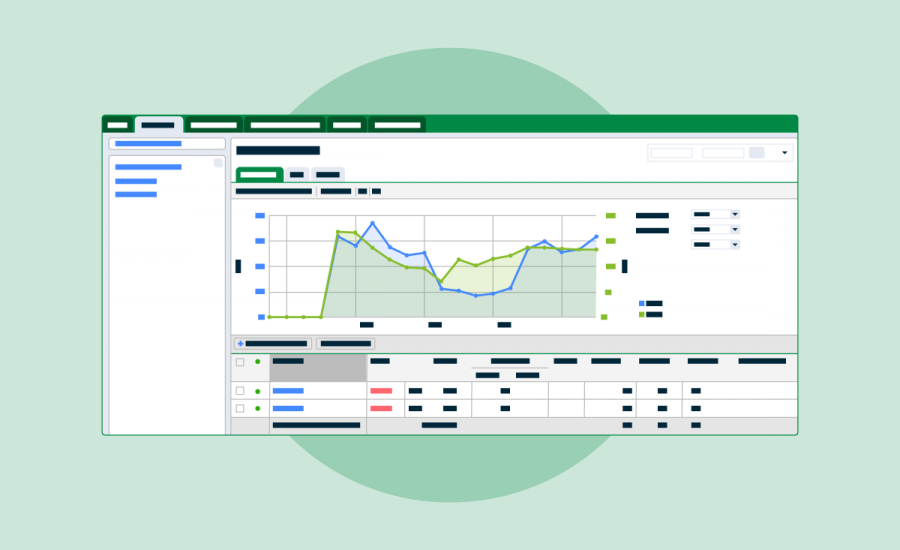There’s a lot of talk about data. Fast data, small data, big data, medium data, dark data — data, data, data. Take any adjective, and someone has probably applied it to data. But there is one term that isn’t used often enough: cleandata.
Without clean data, information isn’t useful to any person or machine. While there are ways you can clean data after it’s been dumped into the swamp, it’s much easier (and cheaper) to start with clean data. Clean data in, clean data out.
So when it comes to social media advertising — where you have to be especially mindful of human error and sloppy naming conventions — how do you get to this ideal state?
Structure your paid social campaigns for clean data
How you structure and name your paid social campaigns plays a major role in ensuring clean data. You want to include all relevant information, be as detailed as possible and keep your formatting consistent. Perfecting these factors creates the foundation for success.
Splitting up your paid social campaigns
Building campaigns takes time; building them perfectly takes even longer. But that extra time pays dividends. We’ll get to that later.
First, let’s talk about how you should set up your paid social campaigns. Commonly, a campaign will be broken out by creative, audience or placement. This structure is fine, but at Strike Social, we take it as step further by creating campaigns based on all elements (see example below).
Example YouTube ad campaign
Say you run a pet bowl company. You have a brand-new collapsible bowl that’s perfect for anyone who travels with their furry friends. But there’s also a group of outdoorsy folks who might find this item useful when taking their dogs with them on camping trips. Because these groups have different interests and needs, you should target your creative to each audience:
- Furry travelers
- Camper dogs
That’s only the start. You should break these audiences down even further. Think about it: A lot of people travel with their pets. We’ve identified that there are different types of travelers who might use your bowls and that you also need to consider whether they have a cat or a dog.
- Furry travelers – Cat – Business travel
- Furry travelers – Dog – Business travel
- Furry travelers – Cat – Extended vacation
- Furry travelers – Dog – Extended vacation
- Furry travelers – Dog – Weekend getaways
Thus, the furry travelers audience has quickly become five separate groups. There is one last element to add to the mix: placement. Why? Because placement helps you see which audiences are performing the best and then adjust your budget accordingly. For this audience, we have two different ad types: in-stream bumper and in-stream 15 second.

We will create a campaign based on each ad as well:
- Furry travelers – Cat – Business travel – Bumper
- Furry travelers – Cat – Business travel – 15 second
- Furry travelers – Dog – Business travel – Bumper
- Furry travelers – Dog – Business travel – 15 second
- And so on …
There’s also a set of ad groups within each of these campaigns. So how should you structure those exactly?
Structuring your ad groups
Determining ad groups for your paid social campaign is not only essential to controlling your budget and creative but also important for analyzing and optimizing. Your ad groups should be based on a combination of keywords, demographics, interests, custom affinities, first-party data and creative.
Effective ad groups create distinct audiences with each group. This lets you know to whom you’re talking and then helps you analyze which messages work best for those people. It also informs future efforts, which we will go deeper into later.
Download our YouTube advertising guide for an in-depth look at structuring your ad groups and other critical areas for YouTube advertising success.
Define your campaign naming conventions
Yikes! You have all these campaigns with different sets of creative and target audiences. How do you keep it all clean?
Our social campaign management team breaks any client request into hundreds of micro-campaigns for the purpose of multivariate testing. Perfect naming conventions are critical each and every time. Let’s examine how that works.
Our team uses artificial intelligence to create perfect naming conventions. Here’s a pared-down version of what that looks like:
- Start date — End date – Campaign – Creative – Audience

So what would that look like for our dog and cat bowl campaigns?
- 2017.03.01 – 2012.03.14 – Furry travelers – Bumper – Cat business traveler
- 2017.03.01 – 2012.03.14 – Furry travelers – 15 Second – Cat business traveler
- 2017.03.01 – 2012.03.14 – Furry travelers – Bumper – Dog business traveler
- 2017.03.01 –2012.03.14 – Furry travelers – 15 second – Dog business traveler
- 2017.03.07 – 2012.03.21 – Furry travelers – 15 second – Dog weekend getaway
- And so on …
Use your clean data to optimize your social advertising
This meticulous approach to campaign setup helps us capture data at a super granular level. But what do we do with all this information?
Test early, and pivot to what’s working
When we launch a campaign, we leverage AI to identify which micro-campaigns are working the best — and we turn off the ones that are under-delivering. This rapid, in-flight optimization enables our team to beat benchmarks by over 50%. Budget shifts often happen several times per day based on bid pricing, performance and other KPIs.
While Strike has the right tools to make quick budget adjustments, we can take some learnings from that and apply it to a smaller scale. By letting your campaign run for a day or two (depending on budget size), you can then see which of your campaigns are performing the best. Since we broke out the campaigns to be so detailed, budgets can be shifted easily based on audience and creative.
Use past performance to indicate future ad targeting
Another major benefit of having this detailed campaign data is the ability to optimize future campaigns based on past performance. Typically, this sort of data can be pretty broad, but with the right campaign structure, you will have a much more granular view into what worked and what didn’t. Strike’s AI tech uses this data to help predict future results for our clients. In fact, each time our clients run a new campaign with us, our tech gets smarter about what mix of targeting, creative and bids will work best for their audience.
So how does this help you? The next time you have a campaign, you can look back at data that provides a plethora of information. Some questions to ask yourself:
- Do different ad types perform better or worse with different audiences?
- Does one type of ad return a higher ROI?
- Does a mix of ad type and target audience provide different results?
- Should any target group be avoided?
- Should budgets be weighted differently based on creative and audience?
Ensure scale in your new ad campaign setup process
We’ve covered campaign setup, ad groups, naming conventions, in-flight optimization and future campaigns. What else could there possibly be? How to scale effectively. Getting detailed with your campaigns provides incredibly useful data, but that data is pointless if you don’t have time analyze it.
If you realize your team doesn’t have the expertise, size or time to effectively manage your social ad campaigns, consider a partner. Outside expertise and added resources will save you a ton of headaches — and help your campaigns go further.
Additional resources








